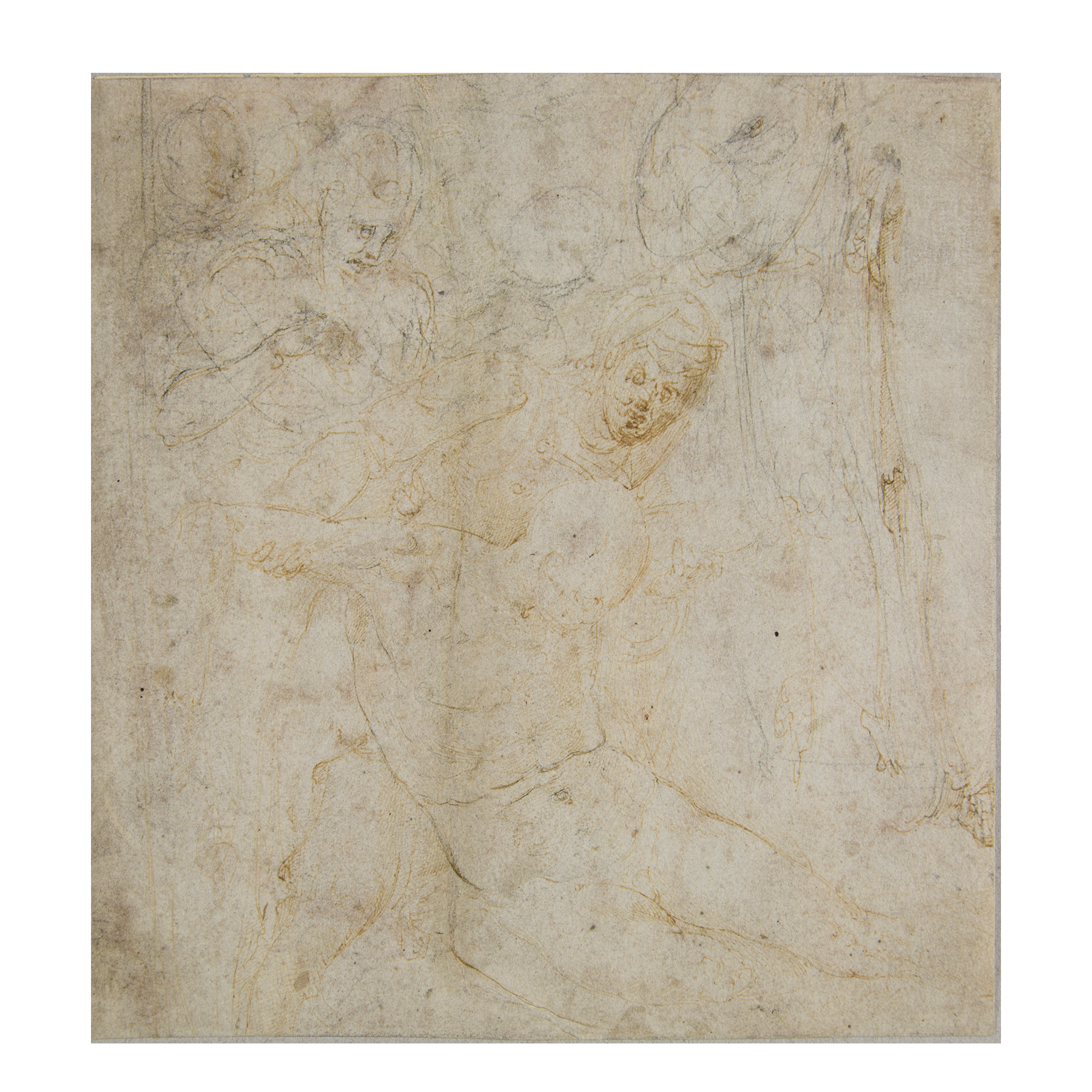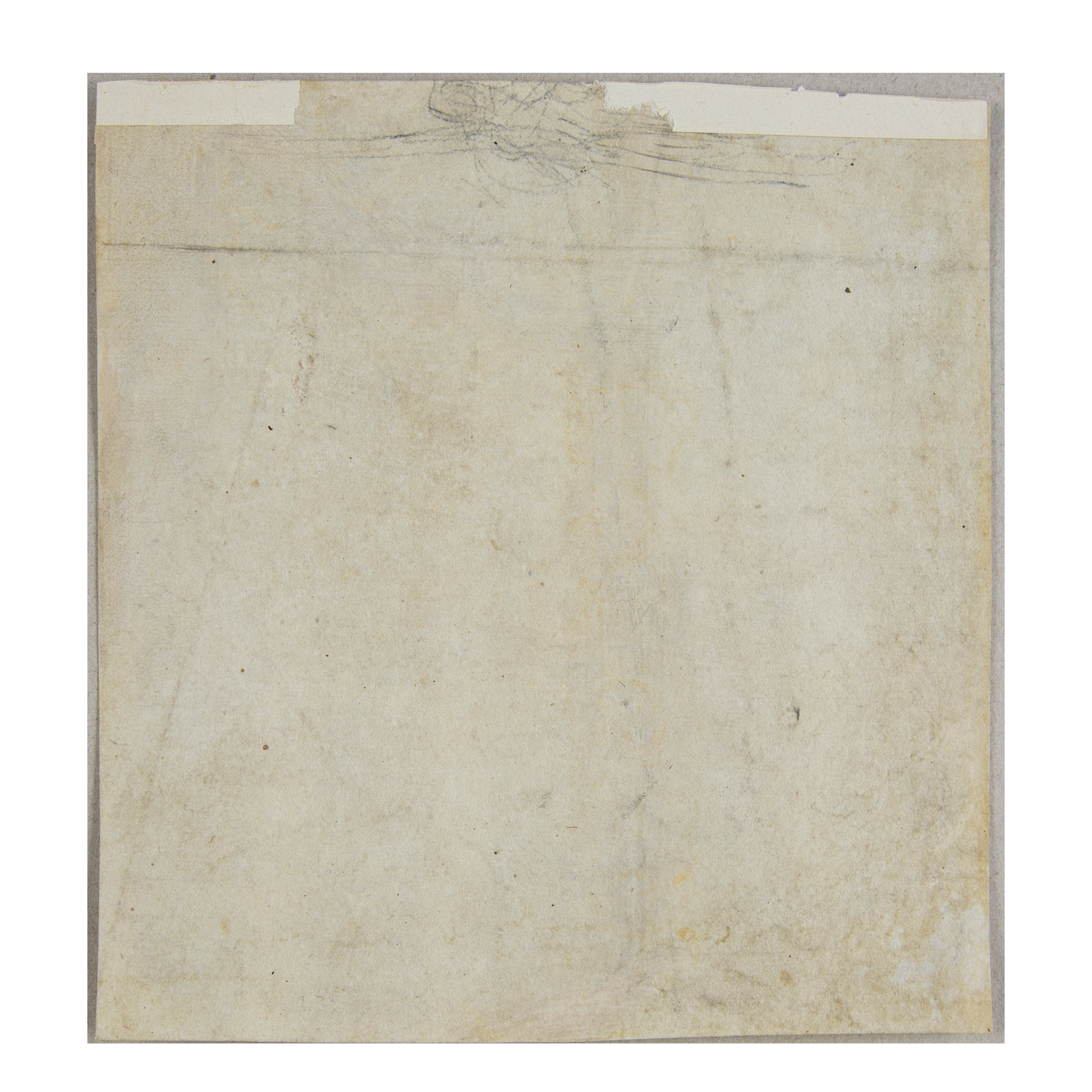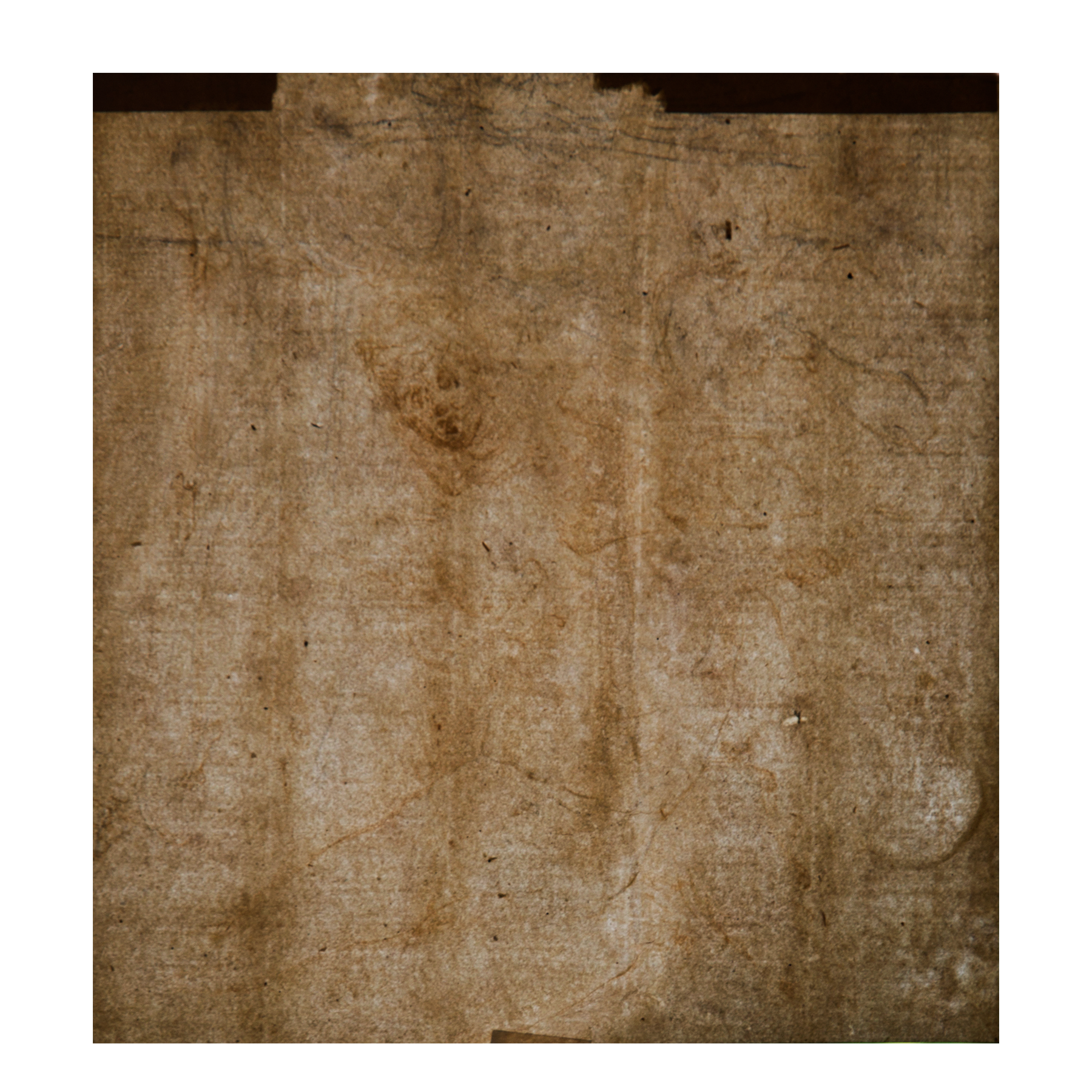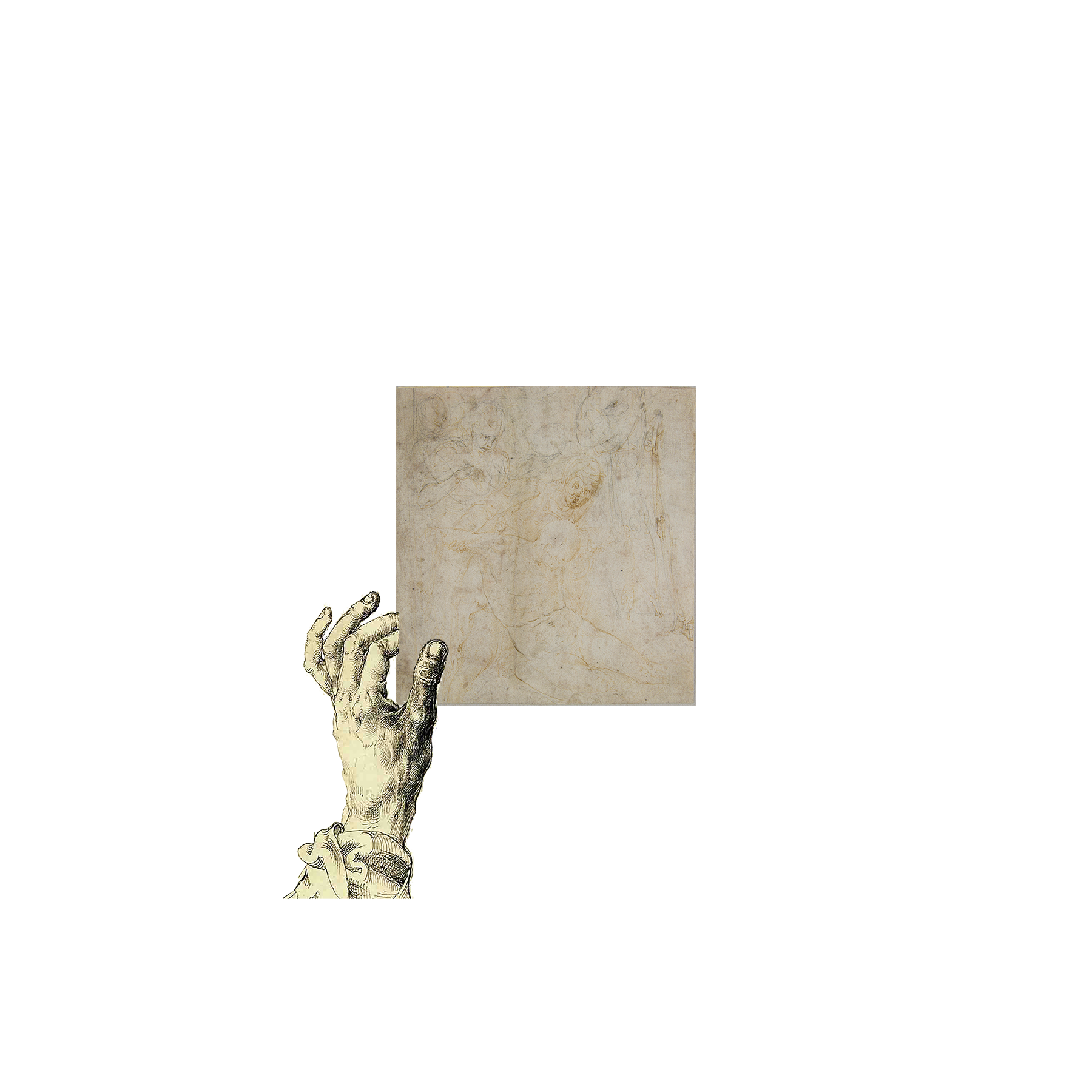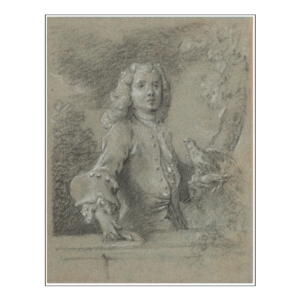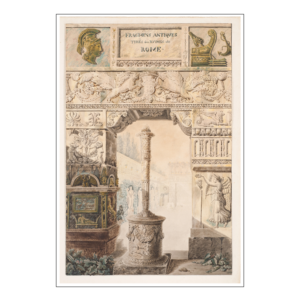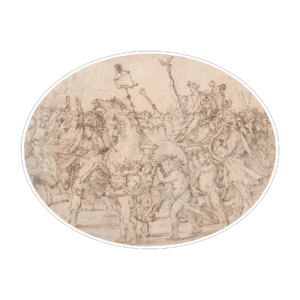Giovanni Battista Franco
Venice, around 1510 – Venice, 1561
Descent from the Cross
Black chalk, pen and brown ink on paper.
186 x 173 mm – 7 5/16 x 6 13/16 in.
Provenance :
– Frankfurt am Main, Joseph Fach gallery[ 1 ].
– Dessau, private collection[ 2 ].
– New York-Düsseldorf, C. G. Boerner, catalog 2021, n ° 2.
Born in Venice, Giovanni Battista Franco trained with his father Jacopo. He went, around 1530, to Rome where he produced a large number of drawings after the antique and after the frescoes of Michelangelo, Raphaël and Polidoro da Caravaggio. In 1536, the architect and sculptor Raffaello da Montelupo asked him to contribute to the decoration of an arc for the triumphal entry of the emperor Charles V. He then participated, in Florence, with Giorgio Vasari, in preparations for the marriage of Duke Alexandre de Medici and Marguerite of Austria and, in 1539, for the one of Cosme 1er and Éléonore de Toledo. After stays in Rome and Urbino, from 1552 he returned to his hometown, performing altarpieces and palace decorations. Painter, engraver and above all designer, he is renowned for his elegant and refined style.
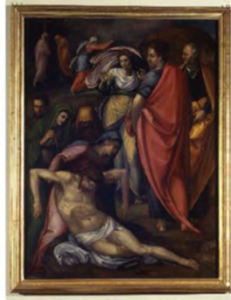 Our sheet is one of the three preparatory studies known for the painting of the Deposition of Christ ( fig. 1 ), kept at the Museo Nazionale di Villa Guinigi in Lucca[ 3 ]. Giovanni Battista Franco made this painting evoking an episode of the Passion of Christ, around 1537, during his stay in this city[ 4 ]. The other two composition sketches for this work are now kept at the Biblioteca Ambrosiana in Milan ( fig. 2, inv. 426) [ 5 ]and at the Museum Boijmans in Rotterdam ( fig. 3, inv. I 118)[ 6 ]. The one of Milan seems to be a little earlier than the other two. The center of the sheet is occupied by the composition of the Passion scene and the edges are filled with rapid sketches of anatomical detail and studies of faces. In the one of Rotterdam, Giovanni Battista Franco took over the main scene, focusing on the framing of the two groups of characters, in the foreground the holy women kneeling alongside the Virgin who supports the body of her son and, on the right, a group of men standing. We can see some features behind the head of the Virgin indicating the artist’s intention to fill the space with the outline of a woman’s head which he will also take up in our sheet.
Our sheet is one of the three preparatory studies known for the painting of the Deposition of Christ ( fig. 1 ), kept at the Museo Nazionale di Villa Guinigi in Lucca[ 3 ]. Giovanni Battista Franco made this painting evoking an episode of the Passion of Christ, around 1537, during his stay in this city[ 4 ]. The other two composition sketches for this work are now kept at the Biblioteca Ambrosiana in Milan ( fig. 2, inv. 426) [ 5 ]and at the Museum Boijmans in Rotterdam ( fig. 3, inv. I 118)[ 6 ]. The one of Milan seems to be a little earlier than the other two. The center of the sheet is occupied by the composition of the Passion scene and the edges are filled with rapid sketches of anatomical detail and studies of faces. In the one of Rotterdam, Giovanni Battista Franco took over the main scene, focusing on the framing of the two groups of characters, in the foreground the holy women kneeling alongside the Virgin who supports the body of her son and, on the right, a group of men standing. We can see some features behind the head of the Virgin indicating the artist’s intention to fill the space with the outline of a woman’s head which he will also take up in our sheet.
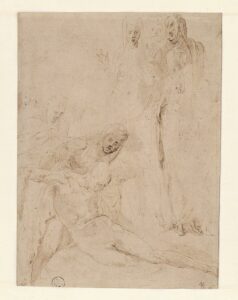
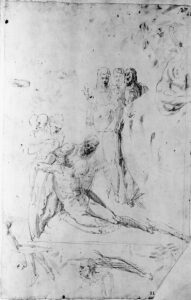 Although our sketch has suffered the damage of time, some parts reveal the extreme finesse of the stroke of the pen of Giovanni Battista Franco as the network of cross hatching on Marie’s clothing. From this first phase of conception, he quickly developed the layout of the protagonists while emphasizing the rendering of Marie’s face marked by affliction. In the final table, the artist does not retain all the elements put in place: he takes up the position of the body of Jesus supported by Mary, while slightly modifying the inclination of the Virgin’s head, turned to the right as if he had wanted to ease the pain of Mary.
Although our sketch has suffered the damage of time, some parts reveal the extreme finesse of the stroke of the pen of Giovanni Battista Franco as the network of cross hatching on Marie’s clothing. From this first phase of conception, he quickly developed the layout of the protagonists while emphasizing the rendering of Marie’s face marked by affliction. In the final table, the artist does not retain all the elements put in place: he takes up the position of the body of Jesus supported by Mary, while slightly modifying the inclination of the Virgin’s head, turned to the right as if he had wanted to ease the pain of Mary.
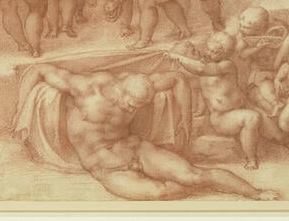 During his stay in Rome between 1330 and 1536, the artist was very influenced by Michelangelo, making drawings based on his works or imbued with patterns that he reused in his own. Thus, the attitude of the naked body of Christ who died with his hanging forearms is taken from the drunk man in the foreground of the Children’s bacchanal[ 7 ] ( fig. 4, detail ) of the florentine master.
During his stay in Rome between 1330 and 1536, the artist was very influenced by Michelangelo, making drawings based on his works or imbued with patterns that he reused in his own. Thus, the attitude of the naked body of Christ who died with his hanging forearms is taken from the drunk man in the foreground of the Children’s bacchanal[ 7 ] ( fig. 4, detail ) of the florentine master.
Condition report – Faded drawing but whose elegance and delicacy are still perceived. Old humidity spots.
[ 1 ] See. Anne Varick Lauder, Battista Franco v. 1510-1561. His Life and Work with Raisonné Catalog, 4 vol., Doctoral thesis, University of Cambridge, 2004, II, p. 326-327, n ° 64 DA, IV, fig. 130.
[ 2 ] Anne Varick Lauder, Battista Franco, General Inventory of Italian Drawings, Volume VIII, Louvre Museum, Department of Graphic Arts, Officina Libraria, Milan, 2009, p. 182.
[ 3 ] Deposition of Christ, Oil on canvas, 1370 x 998 mm, Lucca, Museo Nazionale di Villa Guinigi, inv. 128.
[ 4 ] Anne Varick Lauder, Battista Franco, General Inventory of Italian Drawings, Volume VIII, Louvre Museum, Department of Graphic Arts, Officina Libraria, Milan, 2009, p. 23 : Franco probably also went to Lucca around 1537 to execute the very mixed and undocumented canvas of the Deposition…
[ 5 ] Codex F245 Inf. n ° 31, Inv. 426, Plume and brown ink; 440 x 285 mm.
[ 6 ] Descent of Cross, Feather and brown ink, 260 x 191 mm, Rotterdam, Museum Boijmans, Inv. I 118 ( PK ).
[ 7 ] Windsor, Royal Collection, inv. 912777.

